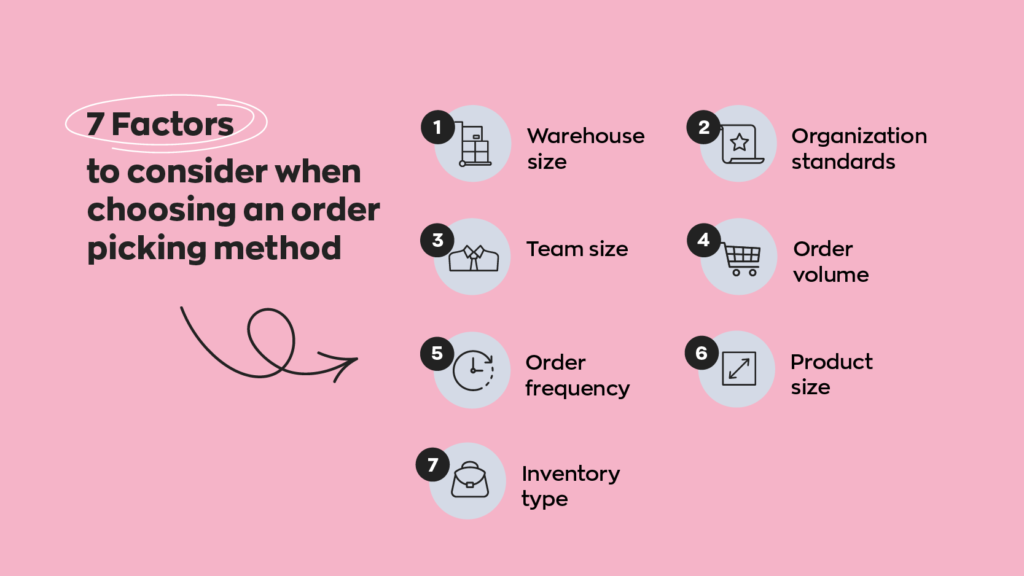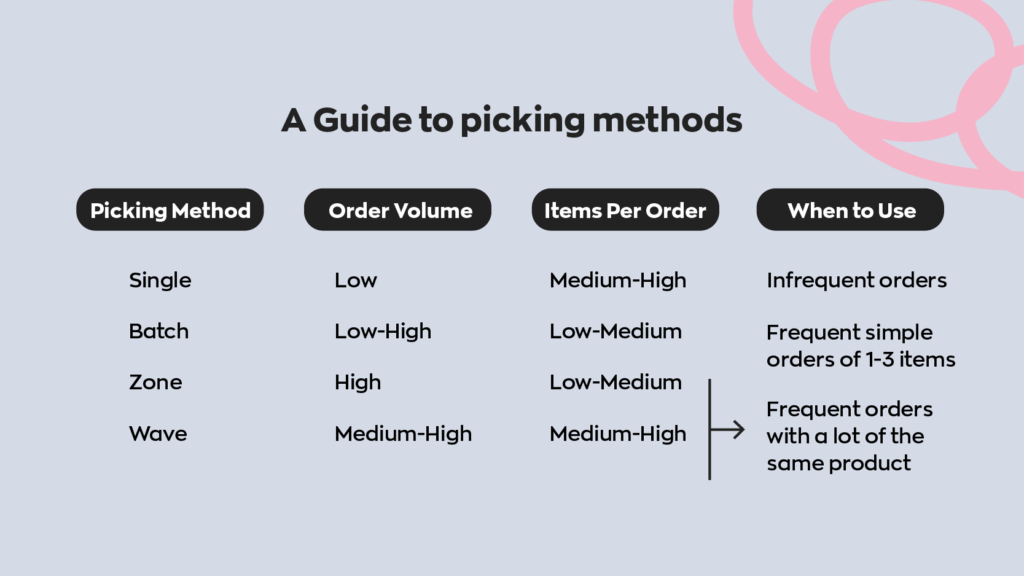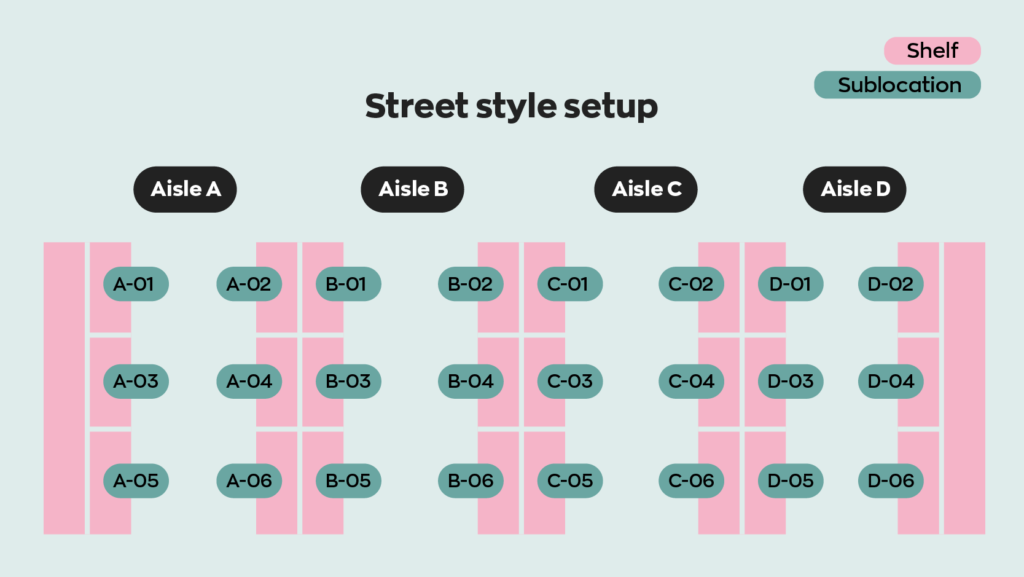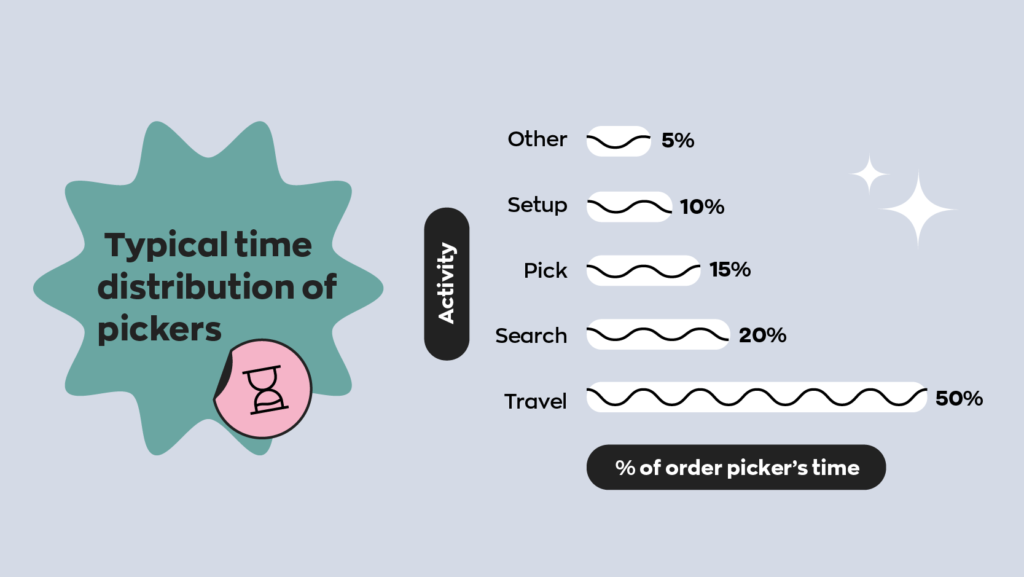Order picking is an important part of warehouse management. With the right methods in place, businesses can reduce costs, boost productivity, and increase customer satisfaction. We delve into the world of warehouse order picking methods to help you make the best choices.
Why is my order picking method important?
When you’re not based in the warehouse day to day, it can be difficult to pick up on areas for improvement. After all, if orders are fulfilled on time, then the system works well, right? Perhaps.
In reality, order picking costs can often be as much as 60% of the total cost of warehousing. Therefore, examining whether the current system is efficient could save money, reduce errors, and increase customer satisfaction.
The right picking method can also make employees’ jobs easier; an inefficient system that sees warehouse staff darting back and forth won’t lead to the best results or happy staff members.
Choosing a process – warehouse management
There are several popular methods for warehouse order picking and no one-size-fits-all approach. The best order picking method for each company depends on elements such as warehouse size, organization, team size, inventory type, and more.

Because of this, you might choose a different method than your competitors or partners. But even as the processes change, the aims remain the same. The right picking method will include, amongst other elements:
- Fast routes
- Well-planned processes
- Minimized room for errors
- High levels of safety
Single picking
In this method, when an order comes through, one person is responsible for picking every item. The employee completes the order by moving around the warehouse.
This system is so simple it means shorter training times and quicker implementation. In single order picking, employees may use barcodes that are linked to a warehouse management system (WMS) to improve accuracy and efficiency.
Wave picking
With wave order picking, sets of orders are released throughout the day in ‘waves’. The aim is to ensure a consistent flow based on shipping priority, order type, and/or workforce levels. Orders are packed once all items in that wave are picked.
This can be very useful for warehouses that regularly deal with high volumes of orders. On the other hand, the system means orders may not be picked and packed straightaway, slowing down some order fulfillment times.

Zone picking
As the name suggests, this method involves dividing the warehouse into specific zones. Each employee works within their own zone, meaning that the order moves around the warehouse, but the person does not.
For large orders, zone picking can limit the distance each employee travels, saving time and energy. Employees will also get to know their zone, which may help reduce confusion and mistakes.
One disadvantage of zone picking is that there could be delays with order packing as employees wait for items to be collated from different zones.
Batch picking
In batch order picking, the employee works on several orders at once. These batches often combine orders with items that are found close together in the warehouse. As a result, the number of trips a picker needs to make is reduced. Once the batch has been picked, the items are then sorted into the relevant orders.
Batch picking works well when orders contain similar items and when these items are relatively small in size. That way an employee can more easily pick and transport multiple items in one trip.
The importance of layout – Street style picking
Research suggests that 50% of total order-picking time is spent on traveling. So, when a single employee is responsible for picking all — or a large part of — an order, it’s especially important to optimize the route they take. Creating a good layout is an important place to start.
Street style layouts are an example of warehouse best practice. Here, you would organize your aisles like streets. Each aisle is labeled with a marker (for example a letter of the alphabet) which works like a street name. That aisle is divided into sections and labeled in a pattern that mimics the house number system on streets in areas like North America or the UK.

The street style setup is ideal for optimizing pick routes so workers don’t need to make unnecessary trips down aisles. You can find out in-depth information about implementing street-style picking in our recent article.
Order picking optimization
Choosing the right warehouse order picking method is crucial, but simply implementing the system may not be enough for maximum efficiency. Other factors need to be taken into account, such as:
Location of frequently picked SKUs
Strategically placing commonly picked items in a location with quick and easy access.
Training
When introducing a new system it’s important to provide training to your employees so they can adapt. This includes regular refreshers and thorough onboarding for new starters.
Reviews
Once implemented, you can review and monitor the new systems’ performance to ensure it’s working at it’s best.
Neat shelves
Even the best possible system for your business won’t be effective without good warehouse organization. Employees need everything to be where it should be, when it should be there.

Other methods: Goods to person
Traditional order picking methods are person to goods (PTG). This works as it sounds; the employee travels to where the item is. However, this can take up time and energy, decreasing efficiency. For larger warehouses, employees may walk upwards of ten miles.
As technology develops, so do the possibilities for implementing goods-to-person (GTP) methods. For example, employees might be based at workstations, receiving items that are delivered to them via a conveyer belt system.
Using GTP order picking methods can help large facilities reduce traveling time and also allow for vertical storage options, making use of otherwise empty space that employees would struggle to reach. However, GTP solutions can be expensive to implement and so the benefits need to outweigh the costs for any business considering transitioning to these methods.
Of course, it isn’t all or nothing. Businesses using person-to-goods methods can still use technology to help them optimize their workflows, including warehouse management software.
Using Warehouse Management Software
When it comes to warehouse management, having the right tools at your disposal can help everything run more smoothly. As explained in Forbes, a warehouse management system (WMS) is a type of software that “tracks all materials and goods as they come in and go out of the warehouse” and can also create systems to help streamline picking and packing processes. This means fulfilling orders more quickly with fewer mistakes.
To reap the full benefits of your warehouse management system, it’s important to choose software that works for your business. Warehouse management software like inFlow’s lets you:
- review pick lists
- transfer stock instantly
- check stock by scanning a barcode
- optimize picking routes
- log shipments
- ….and more.
These actions can be done straight from your phone (or via a scanner if you prefer), with the option to view live information and make changes. That way, your decisions are always based on up-to-date information.
Which order picking method do you prefer? We’d love to find out in the comments!






Hi there
I have a work permit, I’m legally permitted to work in Canada, please let me know any labour job available.
I can start any time
Thank you
Hi Md.Jahed,
I would check your local listings for any job opportunities in your area. LinkedIn is also a great resource for job listings. We’re a software company that provides solutions for businesses managing their inventory, so we can’t really help you in your job search.
Best of luck,
Jared